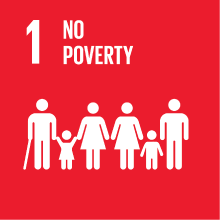BEHAVIOURAL ECONOMICS
- Academic year
- 2024/2025 Syllabus of previous years
- Official course title
- BEHAVIOURAL ECONOMICS
- Course code
- EM2Q09 (AF:506471 AR:293722)
- Modality
- On campus classes
- ECTS credits
- 6
- Degree level
- Master's Degree Programme (DM270)
- Educational sector code
- SECS-P/08
- Period
- 4th Term
- Course year
- 1
- Where
- VENEZIA
- Moodle
- Go to Moodle page
Contribution of the course to the overall degree programme goals
Therefore, this course is essential for those wishing to specialize in areas such as behavioral finance, public policy, resource management, and marketing. It provides the necessary tools to understand and predict real economic behaviors, which are more complex than those described by traditional economic theories. Furthermore, it encourages critical reflection on individual and collective choices, preparing students to interpret market dynamics and make informed decisions in contexts of uncertainty and risk. Through its interdisciplinary approach, the course also develops skills to address complex problems and propose policies aimed at improving social and economic well-being.
Expected learning outcomes
1. Knowledge of Behavioral Economics Foundations: Students will gain an in-depth understanding of the key concepts and theoretical models of Behavioral Economics, including the two decision-making systems (System 1 and System 2), heuristics and cognitive biases, choices under uncertainty and risk, and the concepts of the experiential self and remembering self.
2. Critical Analytical Skills: Students will be able to analyze and evaluate economic decisions through the lens of Behavioral Economics, identifying the psychological factors that influence individual and collective choices and distinguishing between rational and irrational behaviors.
3. Application of Theories in Economic Contexts: Students will develop the ability to apply Behavioral Economics theories to analyze real-world economic behaviors, understanding how factors such as emotions, context, and the presentation of information affect economic decisions.
4. Practical Decision-Making Tools: Students will acquire practical tools to improve the quality of economic decisions in uncertain and risky contexts, both at the individual and collective level, using the knowledge gained about cognitive biases and heuristics.
5. Interdisciplinary Competence: Students will develop interdisciplinary skills to tackle complex economic problems by combining psychological principles with economic ones, useful for formulating public policies, designing marketing strategies, and managing resources.
6. Critical Reflection and Proposal Skills: Students will be able to critically reflect on the implications of the theories and models studied, proposing practical solutions and economic policies aimed at improving social and economic well-being.
7. Communication and Argumentation: Students will develop the ability to communicate and argue effectively their analyses and proposals in academic and professional contexts, presenting clearly the behavioral dynamics influencing economic decisions.
Pre-requirements
- Basic Knowledge of Economics: A solid understanding of the fundamental principles of economics is required, including concepts such as microeconomic theory, consumer behavior theory, and market dynamics (supply and demand).
- Knowledge of Statistics and Mathematics: Students should be able to apply basic statistical tools and mathematical concepts for data analysis and the interpretation of economic models, as the course involves understanding quantitative techniques for analyzing economic decision-making.
- Critical Analysis Skills: Students are expected to have developed critical thinking abilities to understand and evaluate complex economic and psychological phenomena.
- Basic Knowledge of Psychology: A basic understanding of psychological concepts such as emotions, motivation, and cognitive processes can be helpful in grasping the behavioral dynamics discussed in the course.
These prerequisites ensure adequate preparation for the advanced topics covered in the course and will allow students to fully grasp the concepts and practical applications of Behavioral Economics.
Contents
Part 1: The Two Systems
The first part introduces the concept of two mental systems that guide judgment and decision-making. System 1 is automatic, quick, and intuitive, while System 2 is slower, rational, and controlled. Participants will understand how System 1, acting as our automatic processor, relies on mechanisms like associative memory to create coherent interpretations of reality. The section emphasizes cognitive ease and how it affects decision-making, as well as how we often jump to conclusions without deep analysis, relying on heuristics when facing complex questions.
Part 2: Heuristics and Biases
This part focuses on the heuristics (quick mental strategies) our brain uses to make rapid decisions, which often lead to systematic errors, known as biases. We will analyze the anchoring bias, where initial judgments strongly influence final assessments, and the availability bias, which causes us to overestimate the likelihood of events based on how easily they come to mind. Emotional and risk biases will also be discussed, highlighting their effects on decision-making in uncertainty. Participants will learn how these biases impact choices in economic, social, and professional contexts.
Part 3: Overconfidence and Illusory Superiority
The third part explores overconfidence, where we tend to believe we understand reality better than we actually do. The course will cover how the illusory validity bias and illusion of understanding influence our confidence in intuition and predictions. Experts, despite their experience, can be swayed by inaccurate intuitions. The course also examines external perspectives that help reduce overconfidence and promote more rational decision-making, especially in economic and financial contexts.
Part 4: Choices
The fourth part challenges the notion that individuals always make rational decisions, as suggested by traditional economic theory. Through Bernoulli's theorem and Kahneman and Tversky's prospect theory, we'll explore how people often make irrational decisions, especially in risk and uncertainty. Topics such as the endowment effect, where people value owned objects more than non-owned ones, and the framing effect, where changing the presentation of a problem alters preferences, will be discussed. This section aims to provide practical tools for recognizing and correcting decision errors caused by these phenomena.
Part 5: The Two Selves
The final part focuses on the concept of the two selves: the experiencing self and the remembering self. The experiencing self lives in the present, while the remembering self deals with recalling past experiences. These selves often have different goals, leading to decisions that are optimal for the remembering self but not the experiencing self. For instance, two painful experiences of different lengths might be remembered differently, with the longer experience seeming less negative if its final part is less painful. This section explores how this distinction affects the measurement of well-being and how both social policies and individual choices can improve quality of life by considering the needs of both selves.
Each part of the course builds on a solid psychological foundation, connecting practical examples, reflections, and interactive discussions to help participants develop a deep, applicable understanding of Behavioral Economics principles.
Referral texts
"Thinking, Fast and Slow" – Daniel Kahneman.
Assessment methods
Type of exam
Grading scale
Teaching methods
Teaching language
2030 Agenda for Sustainable Development Goals
This subject deals with topics related to the macro-area "Poverty and inequalities" and contributes to the achievement of one or more goals of U. N. Agenda for Sustainable Development




